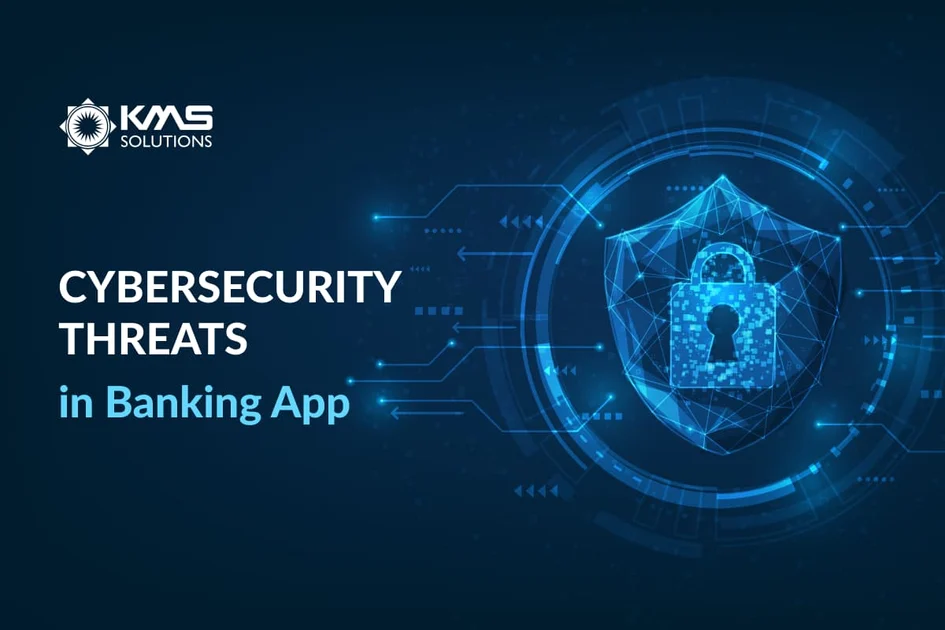In today’s digital age, the convenience of conducting financial transactions through banking apps comes with a crucial caveat: the pressing need for robust security measures. Verizon’s research on data breach investigations reveals that around 86% of cyber crimes are undertaken with the intent to steal money, with mobile banking apps being a prime target for fraudsters. Moreover, cybersecurity threats pose substantial risks to both financial institutions and the privacy of their users’ sensitive data.
Therefore, in this article, we’ll delve into the nature of cybersecurity threats in banking apps and their far-reaching impacts; from that, we analyze specific threats encountered in the banking sector and give some solutions from cybersecurity experts,
Understanding Cybersecurity Threats in Banking Apps
According to the EY/IIF survey released in early 2023, which collected data from 88 banks across 30 countries, a significant 72% of chief risk officers globally identify cybersecurity as the foremost risk in the banking sector for the coming years.
Safeguarding user assets stands as the primary objective of cybersecurity in the banking sector. With a growing shift toward cashless transactions, more transactional and financial activities go online. As individuals have increasingly relied on digital payment methods like credit and debit cards for transactions, the role of cybersecurity is becoming more important than ever.
In the realm of banking apps, these threats take various forms, from sophisticated malware to phishing attacks targeting unsuspecting users. Cybercrimes in digital banking not only impact customers but also affect banks during their attempt to recover data. Banks and financial institutions may face the risk of data breaches, financial losses, and damage to their reputation while for users, the impact ranges from potential identity theft to unauthorized access to sensitive financial information.
Specific Threats in Banking Apps
Here are some common cybercrimes that banks and financial institutions should pay attention to when developing banking apps:
1. Phishing Attacks
Cybercriminals attempt to trick users into revealing sensitive information, such as login credentials or personal details.
For example: A user receives an email claiming to be from their bank, urgently requesting them to click a link and update their account information. The link, however, leads to a fake website designed to steal login credentials.
According to the Anti-Phishing Working Group (APWG), in the second quarter of 2023, the APWG observed 1,286,208 phishing attacks. This was the third-highest quarterly total that the APWG has ever recorded.
2. Malware
Malicious software is designed to infiltrate banking apps, compromise security, and enable unauthorized access or data theft.
For example: A user unwittingly downloads a seemingly innocuous app from a third-party store. This app contains malware that can compromise the security of the banking app, potentially leading to unauthorized access and data theft.
According to Sopho’s report, in 2023, the rate of ransomware attacks in financial services will continue to rise. It went up from 55% in the 2022 report to 64% in this year’s study, which was almost double the 34% reported by the sector in the 2021 report.
3. Man-in-the-Middle Attacks
Hackers intercept and potentially alter communication between the user and the banking app, leading to unauthorized access.
For example: A user connects to a public Wi-Fi network, and an attacker intercepts communication between the user’s device and the banking app. The attacker can eavesdrop on sensitive information or manipulate data in transit.
According to a cybersecurity report by Akamai, Akamai Research finds 65% increase in web application and API attacks on financial services.
4. Data Breaches
The unauthorized access or release of sensitive user data, often resulting from inadequate security measures.
For example: A banking app’s database is breached, exposing sensitive customer information such as names, addresses, and account details. This data breach can lead to identity theft and other fraudulent activities.
According to the Q3 2023 Data Breach Report of The Identity Theft Resource Center(ITRC), they tracked 2,116 data compromises in the first three quarters of 2023, breaking the all-time high of 1,862 compromises in 2021.
Solutions to Minimize Cybersecurity Threats
Addressing cybersecurity threats requires a multifaceted approach encompassing various strategies and tools to bolster defenses and protect against evolving risks. Some key solutions to minimize cybersecurity threats include:
1. Encryption
End-to-end encryption is a solution to this massive threat since it prevents unauthorized individuals from accessing or manipulating the data. Robust encryption mechanisms can be implemented to protect data during transmission, ensuring that even if intercepted, it remains unreadable.
Use-Case: Secure Mobile Banking Transactions
Imagine a user accessing their mobile banking app to transfer funds or check their account balance. During this transaction, robust encryption mechanisms come into play. The user’s sensitive financial information, including account details and transaction data, is encrypted using advanced encryption algorithms. Even if a cybercriminal attempts to intercept this data during transmission over the internet, the encrypted information remains unreadable and secure.
2. Strong Authentication
Strengthen access controls by requiring users to authenticate through multiple verification methods such as multi-factor authentication (MFA), such as passwords, biometrics, or one-time codes.
Use-Case: Enhanced Account Login Security
Consider a scenario where a user attempts to log in to their banking app. In addition to entering their password, the app employs multi-factor authentication (MFA). The user receives a one-time code on their registered mobile device. To complete the login, they must enter this code. Even if a malicious actor manages to obtain the user’s password, they would still need the additional authentication factor, adding an extra layer of security and thwarting unauthorized access.
3. Regular Software Updates
Cybercriminals frequently exploit known vulnerabilities. Regular updates help the app stay ahead by closing these security gaps, making it less susceptible to exploitation and cyber attacks. Moreover, by frequently updating the banking app, you can keep it under systems up-to-date to patch vulnerabilities and protect against emerging threats.
Use-Case: Fortifying Against Exploits
Picture a banking app that regularly releases software updates. These updates not only introduce new features but, more importantly, address known vulnerabilities. In a specific case, a security audit reveals a potential weakness in the app’s code. The development team swiftly releases a patch as part of a routine update, closing the vulnerability before cybercriminals can exploit it. Regular updates thus serve as a proactive defense mechanism, fortifying the app against emerging threats.
4. Employee Training and Awareness
Educate your dedicated software development teams about cybersecurity best practices, including the recognition of phishing attempts and the importance of testing banking apps in every update.
5. Advanced Monitoring Systems
Deploy systems that continuously monitor user behavior and detect anomalies, enabling swift responses to potential security breaches.
Use-Case: Real-time Anomaly Detection
Imagine a user who typically makes transactions within their home country suddenly initiating multiple large transactions from a different geographic location. An advanced monitoring system detects this anomaly in real-time, flagging it as potentially fraudulent behavior. The user is promptly notified, and the bank takes immediate action to secure the account, preventing unauthorized access and mitigating the potential impact of a security breach.
Conclusion: A Unified Front Against Cyber Threats
As the digital landscape evolves, the stakes in cybersecurity have never been higher for banking apps. The insights provided by cybersecurity experts underscore the need for a proactive approach. By applying the above strategies, the financial industry can fortify its digital defenses.
It’s obvious that the fight against cybersecurity threats in banking apps requires a collaborative effort from financial institutions, technology experts, and users. By prioritizing cybersecurity, we not only protect sensitive financial information but also contribute to building a more secure and resilient digital banking ecosystem.
Take a proactive step toward securing your banking app by partnering with KMS Solutions. With a proven track record in delivering cutting-edge technology solutions and expertise in the finance sector, KMS Solutions is committed to enhancing the security and resilience of your banking applications.
Contact us today to fortify your digital financial services and provide your users with a secure and trustworthy banking experience.





